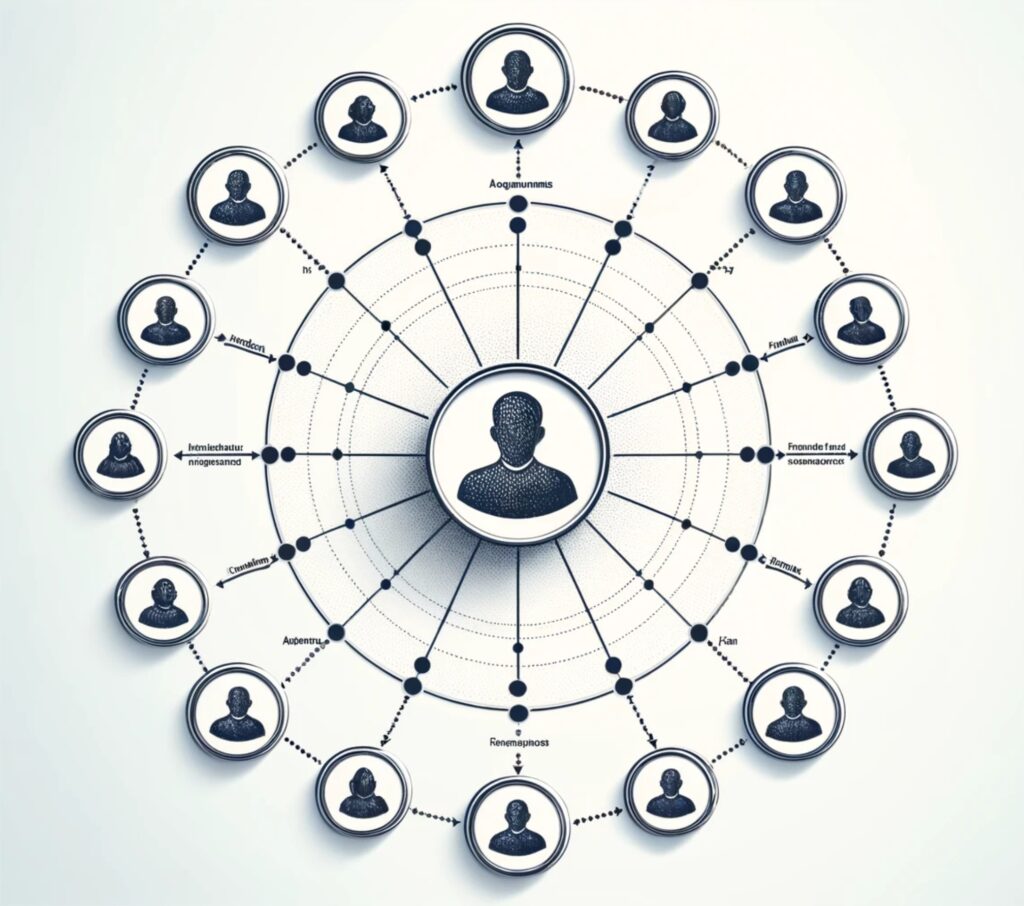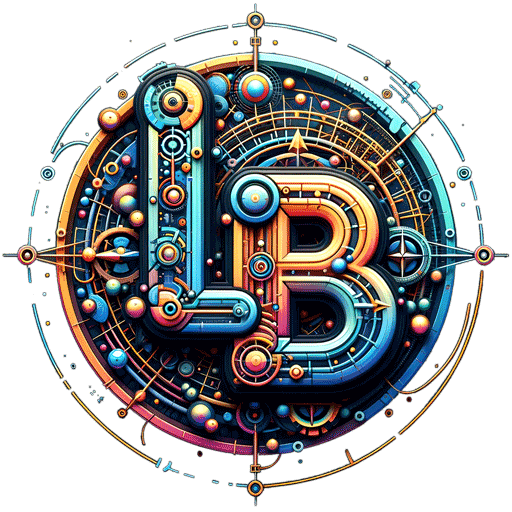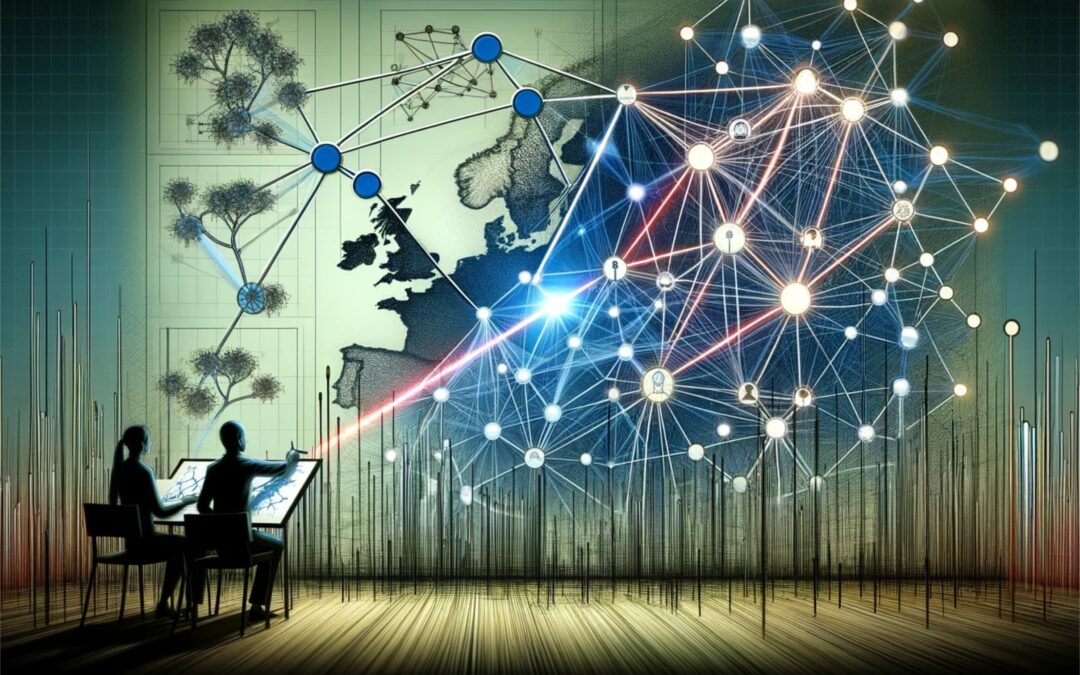In our hyperconnected world, data analysis is essential to understand the complex networks that surround us. Traditionally, direct links (or level 1) are used to represent these networks. However, indirect links (or levels 2 and 3) add a crucial extra dimension, revealing deeper and more significant relationships. This article explores the importance of these indirect links and their application in various fields.
We will explain how level 2 and 3 links enhance network analysis. Through concrete examples and practical applications, we will show how these links can transform our understanding of data and improve decision-making.
Understanding Indirect Links
Definition of Direct and Indirect Links
Direct links (level 1) are immediate connections between two entities. Indirect links, on the other hand, include level 2 and 3 relationships, where two entities are connected by one or more intermediary entities. These indirect links are essential for understanding the overall structure of complex networks.
Concrete Examples
- Social Networks (LinkedIn): On LinkedIn, all people directly connected to you are level 1 contacts. However, among these contacts, there are close friends, colleagues, as well as distant acquaintances. Level 2 (friends of friends) and level 3 links can reveal more significant relationships. For example, if two of your contacts share many mutual friends, it is likely they know each other well, even if they are not directly connected.
- Police Investigations: In criminal investigations, convergence beams use indirect links to establish connections between suspects. Elements such as common phone numbers, places frequented at the same times, or online interactions can suggest complicity. Visualizing these data in graph form can reveal central suspects in a criminal network.
Analyzing Social Networks with Indirect Links
LinkedIn Contacts and Professional Relationships
Level 2 links on LinkedIn can indicate deeper professional relationships. For example, if two people share many common professional contacts, it may suggest they move in similar professional circles, even if they do not know each other directly.
Weighting Links
To analyze these networks, links can be weighted according to levels. Specific algorithms can identify the most significant links, assigning more weight to frequent or contextually relevant indirect connections.

Practical Applications of Indirect Links
Police Investigations and Convergence Beams
Indirect links are essential in police investigations. For example, if two suspects share phone numbers, frequent the same places, or interact on the same online platforms, it can indicate collaboration. Visualizing these connections helps target key suspects and understand the structure of a criminal organization.
Academic Research Networks
Academic collaborations can be analyzed through indirect links. A researcher can be connected to another through several common publications. For example, if researcher A collaborates with B on a paper, and B then collaborates with C, A and C share an indirect connection. This can indicate common research interests or future collaboration opportunities.
Marketing and Advertising
In digital marketing, identifying influencers is crucial. For example, a user on a social platform may be influenced by people they are not directly connected with but share several common connections. By analyzing these level 2 and 3 connections, marketers can more effectively target potential influencers.
Public Health
Tracing the transmission chains of infectious diseases requires understanding indirect contacts. For example, identifying potential super-spreaders in an epidemic by examining level 2 and 3 contacts helps better contain the spread. If an infected person A has been in contact with B, who then has been in contact with several other people (C, D, E), understanding these indirect connections is crucial for public health management.
Visualizing Graphs with Indirect Links
Graphical Representation of Data
Graphs allow visualizing indirect connections, naturally bringing together people who share many common links. This visualization reveals clusters and central nodes, facilitating the identification of important relationships.
Identification of Central Characters
Graphs can highlight central characters in a network. For example, in a criminal investigation, a person located at the center of a group of indirect connections could be a key suspect. Techniques such as centrality degree analysis can identify these central nodes.
Considering Indirect Links in Analysis
Calculations and Data Ranking
To analyze indirect links, weighting and ranking methods are used. These techniques identify the most significant relationships by assigning weights to connections based on their frequency and context. A complementary approach is to weight direct links by considering indirect links. In this case, the map representation can be simplified by displaying only the level 1 network.
Advantages of Visualization over Linear Representation
- Overview: Visualization offers a global perspective on data, allowing for understanding the organization and underlying structures.
- Sense of Orientation: Users can navigate the map, find specific elements, and observe the evolution of graphs over time.
- Serendipitous Pathway: Visual navigation allows for discovering important elements intuitively, following the natural connections of the graph.

